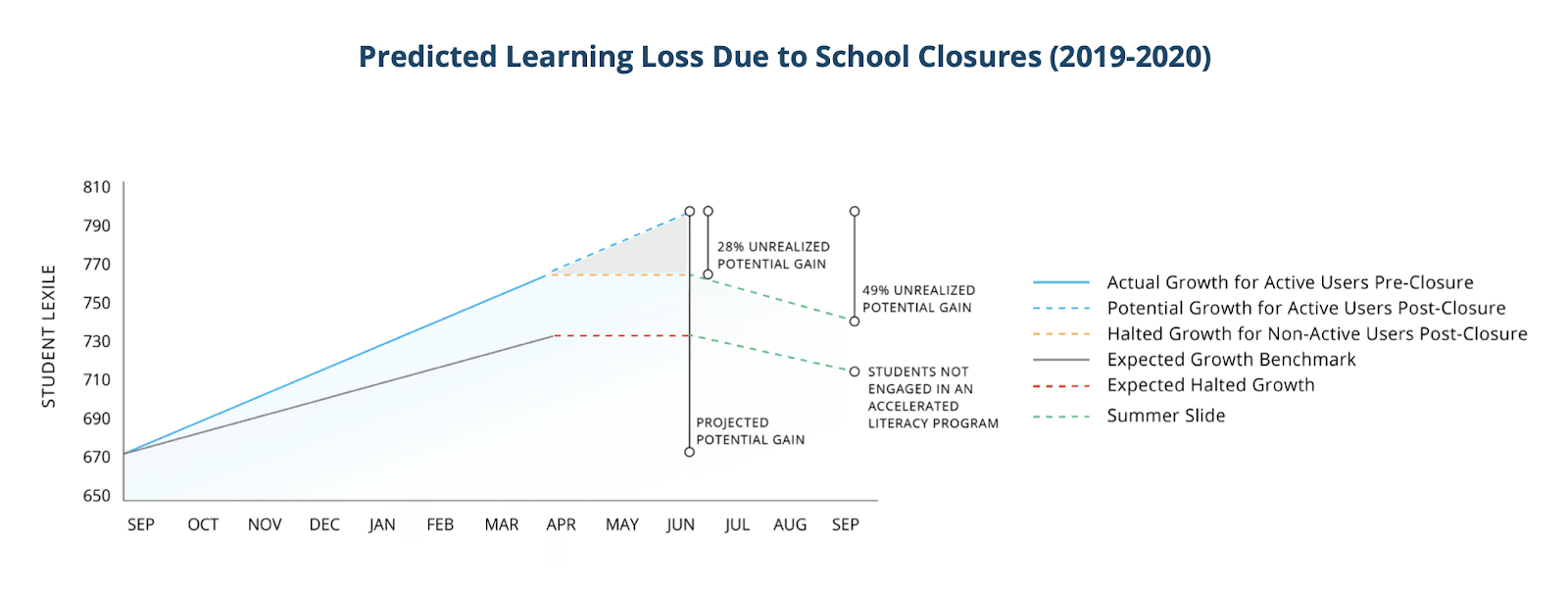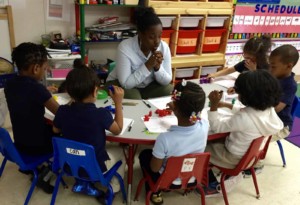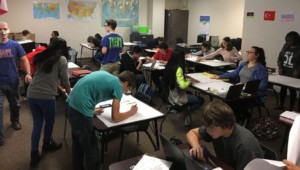The Pandemic & Literacy: Achieve3000’s Early Insights

Teachers, parents, and students alike are letting out a collective sigh following triage-grade e-learning efforts that were put into high gear 10 weeks ago. But administrators are not. Superintendents and central office staff such as curriculum directors and directors of technology are still working exclusively on retooling for a fall semester with a significantly better learning experience than the one we just encountered.
As these leaders toil away, the tone of their work needs to be generous in purpose but the work to be done is currently bereft of the evidence necessary for precise decisions. We’re too close to it yet but everyone in the education profession will begin to have informative insight that will nurture hope and progress. They’re staying at the till. They’re scrutinizing options. They’re sharing their plans. These educators are committed to making a difference. Some are being reinvigorated as they were when they first took the Future Ready or Project Unicorn pledge. And now new academic data about the crisis caused by a pandemic is surfacing in meaningful ways.
Recently, Achieve3000 released their findings from a dataset of over 1,300 public school districts representing 1.6M students learning remotely on their differentiated literacy platform. For the most vulnerable students, the early numbers look dire projecting upwards of 49% loss of academic growth measured in Lexiles. One graph from the report focuses on predicted learning loss:

“Alternatively, when students’ learning opportunities are cut short, and there are not already robust online learning solutions in place, students will experience significant losses that could have been avoided—the yellow dotted line.”
The report goes on to explain how this diverges from high-income students, assuming they’d continue increasing their reading prowess by staying engaged in high-quality reading through the final grading period while their aforementioned peers flattened in their efforts. This reveals the achievement gap between both poles further spreading, upwards of an 18% increase.
The trends and recommendation in the report raise some additional questions about the research:
- Why were some schools so slow to respond to the shift to learning from home? Is there a pattern to these schools and does it vary by state, size, or some other universal factor?
- What are some of the hallmarks of virtual learning mastery, for both the student and the teacher?
- What efforts do Achieve3000 schools employ by way of vendor-provided professional development that are unique—especially around student engagement? And are they transferable to virtual learning only?
CEO Stuart Udell underscores, “the findings have nothing to do with Achieve3000 specifically. It was simply a portal.”
Though their dataset for the study is demographically anonymous, the researchers were able to align the free/reduced lunch status of students with their household income. With unfortunate predictability, these data show how students in schools serving families and communities closer to the poverty threshold were not logging in and engaging with reading activities like their more affluent peers, a struggle Stuart wrestles with going back to his days as a teacher and administrator.
He asked rhetorically, “how do we use technology to liberate teachers so they can be great?” And one thing Stuart knows about these teachers is that they work in schools without a material distinction for how teaching and learning transpires. “Instructional tech was embedded in the fabric of these districts.” Stuart said the teachers and students knew what to do when the pandemic broke out. The instruction in such schools spans the gamut with face-to-face to virtual instruction to support learners with the right rigor, which is why those schools aren’t suffering as much from closures. Technology aside, the culture in these higher-performing schools are more flexible in their approach and thus more adaptable.
This sounds the same way professionals are functioning now as we flit from one Zoom meeting to another and fire off emails or Slack updates in between.
As summer approaches, data from other platforms like Achieve3000 should continue to emerge and longitudinally guide school decision-makers towards precision for better supporting our students who are most at risk.
For more, see:
- How to Reopen Schools: A 10-Point Plan Putting Equity at the Center
- The Learning Must Go On
- Pandemic Spike in AI Learning–and What it Means for Schools
- Shining the Competency Education Light on Education in the Time of COVID-19
- Literacy Concerns in the New Mutuality
Stay in-the-know with innovations in learning by signing up for the weekly Smart Update.
Getting Smart has launched the Getting Through series to support educators, leaders, and families on the path forward during such an uncertain time. This series will provide resources and inspiration as we face long term school closures, new learning environments, and address equity and access from a new lens. Whether you are just getting started with distance or online learning, or you’ve had plans in place and have the opportunity to share your work and guidance with others, there is a place for your voice and an opportunity to learn.
We’re going to get through this together, and we invite you to join us. Please email [email protected] with any questions or content you’d like considered for publication. We also invite you to join the conversation and on social media using #GettingThrough.







0 Comments
Leave a Comment
Your email address will not be published. All fields are required.